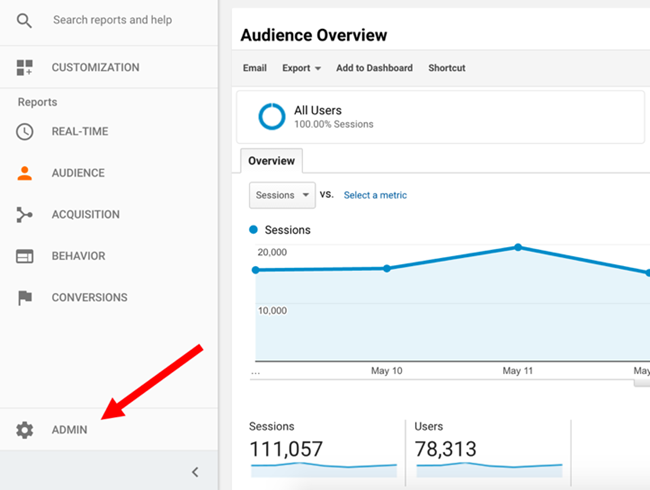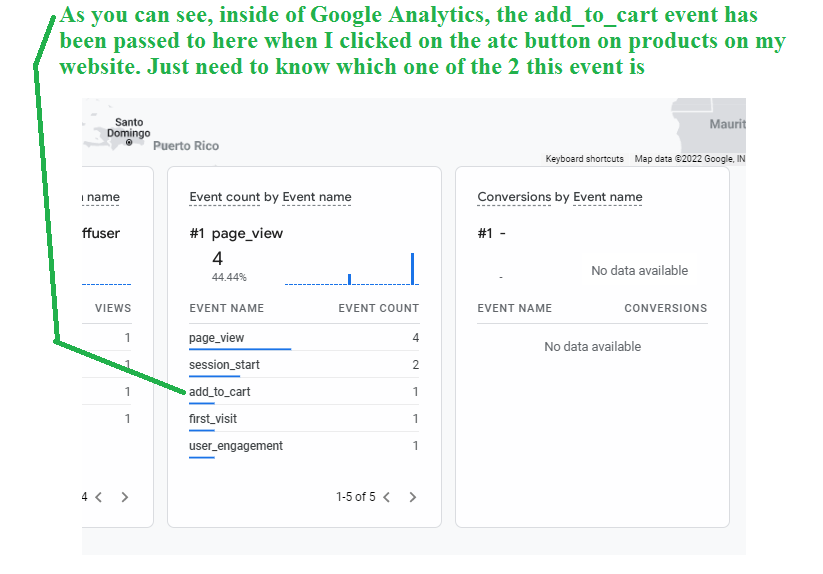Effective Approaches for Remarketing in Google Analytics
In the realm of electronic marketing, the world of remarketing in Google Analytics stands as a pivotal device for companies intending to boost their on the internet visibility and conversion rates. With strategic audience division, customized remarketing listings, and interesting ad creatives, organizations can craft personalized campaigns that reverberate with their target market. The true success exists in the capacity to constantly refine and maximize these strategies based on efficiency metrics and information understandings. By exploring the nuances of vibrant remarketing and leveraging sophisticated tracking tools, companies can unlock the complete potential of their remarketing initiatives, resulting in raised brand visibility and consumer involvement.
Audience Segmentation
Making use of target market segmentation is an essential strategy in enhancing the performance of remarketing campaigns within Google Analytics. By separating your audience into unique groups based on their actions, demographics, or passions, you can tailor your marketing messages to be more pertinent and engaging. This approach permits you to provide personalized advertisements to certain sectors, increasing the probability of conversion.

In addition, target market segmentation helps you recognize the varying demands and preferences of various customer teams, allowing you to craft even more compelling ad creatives and offers. This targeted approach not just improves the effectiveness of your remarketing efforts yet also boosts total campaign efficiency.
Establishing Up Remarketing Listings
To properly implement remarketing strategies in Google Analytics, the initial action entails developing targeted remarketing checklists based on specific audience communications. Establishing remarketing checklists allows marketing professionals to segment their site site visitors right into different categories based upon their habits, such as web pages checked out, items looked for, or activities taken on the site. By specifying these segments, marketing professionals can after that develop individualized and pertinent ads that target these details teams, enhancing the possibility of conversion.
Remarketing lists can be established using various requirements such as page check outs, duration of browse through, particular goal conclusions, or perhaps details occasions caused on the site. This level of customization enables online marketers to customize their promotions to match the rate of interests and choices of each fractional audience, causing greater interaction and conversion prices.
Furthermore, remarketing lists can additionally be created based on information imported from other resources like CRM systems, allowing for also more precise targeting. By setting up these targeted remarketing listings, online marketers can successfully connect to possible consumers that have actually already revealed rate of interest in their product and services, making the most of the effect of their remarketing projects.
Producing Compelling Advertisement Creatives
After segmenting site site visitors into targeted remarketing listings based upon particular audience interactions, the next vital action is to craft compelling ad creatives that reverberate with each segmented group's passions and preferences. The effectiveness of remarketing campaigns heavily relies upon the capability of these advertisement creatives to capture the attention of the target market and drive them to take the wanted action.
To produce engaging ad creatives, it is vital to see post understand the unique characteristics of each fractional team (What Is “Remarketing” In Google Analytics?). Tailoring the messaging, visuals, and uses to align with the rate of interests and choices of the target market can dramatically boost the chances of conversion. Making use of vibrant advertisements that immediately readjust content based on the individual's habits can likewise improve the customization of the ad experience

Surveillance Performance and Optimization
Efficient tracking of project performance and consistent optimization are vital elements of effective remarketing approaches in Google Analytics. To make sure the performance of remarketing projects, marketing professionals have to consistently track essential efficiency metrics such as click-through prices, conversion rates, and return on advertisement spend. By monitoring these metrics, marketers can gain valuable insights into the performance of their projects and determine areas for renovation.
In Google Analytics, marketing professionals can leverage tools like conversion tracking and audience segmentation to evaluate the performance of their remarketing projects. Conversion monitoring enables online marketers to track certain actions that customers take after clicking on a remarketing advertisement, supplying useful data on the efficiency of the project in driving desired results. Audience division, on the other click to investigate hand, allows marketers to split their audience right into various sectors based upon numerous criteria such as demographics, behavior, and passions, enabling more targeted and individualized remarketing efforts.
Constant optimization is necessary for maximizing the influence of remarketing projects. Marketing professionals need to use A/B testing to explore different advertisement creatives, messaging, and targeting strategies to determine the most efficient techniques. By regularly examining campaign performance information and making data-driven optimizations, online marketers can make sure that their remarketing campaigns are accomplishing the desired outcomes and driving conversions successfully.
Leveraging Dynamic Remarketing
Making use of dynamic remarketing can substantially enhance the significance and influence of targeted ads in Google Analytics. This innovative strategy allows advertisers to reveal tailored advertisements to customers who have previously seen their web site or utilized their mobile application. By dynamically displaying services or products that the customers have shown rate of interest in, dynamic remarketing helps to keep the brand fresh in their minds and urges them to go back to complete an acquisition.

Additionally, vibrant remarketing campaigns can be automated and maximized in real-time based upon performance data, ensuring that the ads remain reliable and pertinent. By leveraging dynamic remarketing in Google Analytics, marketers can develop extra impactful and targeted ad campaign that resonate with their target market and drive results.
Final Thought
In verdict, efficient remarketing strategies in Google Analytics include target market division, targeted remarketing listings, compelling advertisement creatives, performance tracking, and vibrant remarketing. By concentrating on customized advertisements, information evaluation, and constant optimization, companies can enhance conversion rates go to my site and drive involvement efficiently. Leveraging tools like conversion tracking makes sure that ads continue to be appropriate and personalized, causing overall success in remarketing initiatives.
Through calculated audience segmentation, customized remarketing listings, and interesting ad creatives, organizations can craft individualized campaigns that resonate with their target audience. Making use of dynamic ads that immediately adjust web content based on the user's actions can additionally boost the customization of the advertisement experience.
Conversion monitoring allows online marketers to track particular actions that customers take after clicking on a remarketing ad, providing beneficial data on the effectiveness of the campaign in driving preferred results.Utilizing dynamic remarketing can dramatically improve the relevance and effect of targeted ads in Google Analytics - What Is “Remarketing” In Google Analytics?.In conclusion, reliable remarketing techniques in Google Analytics entail target market segmentation, targeted remarketing listings, compelling ad creatives, efficiency tracking, and dynamic remarketing